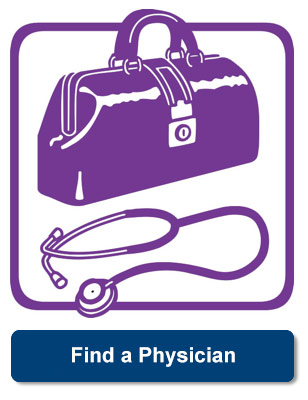 There are several factors people consider when choosing the right primary care provider for themselves and their families, including:
There are several factors people consider when choosing the right primary care provider for themselves and their families, including:
- Practice location and hours
- Health insurance coverage
- Level of comfort, rapport and trust
But there is also another factor to consider: Should you choose a Doctor of Medicine (M.D.) or a Doctor of Osteopathic Medicine (D.O.)?
Many people don’t know exactly what a D.O. does. However, the number of osteopathic physicians in the United States is growing. According to the American Osteopathic Association’s 2018 Osteopathic Medical Profession Report, there are 114,425 D.O.s practicing in the United States, including 51,008 in primary care. That’s about 10 percent of all the primary care physicians.
What’s the difference?
Like allopathic physicians (M.D.s), D.O.s attend four years of post-graduate medical school, plus internships and residencies of three to four years. D.O.s also receive additional musculoskeletal training known as osteopathic manipulative treatment (OMT), which is best described as a hands-on technique used to treat muscle pain and other conditions such as asthma, sinus disorders and migraines.
“The osteopathic tenet is to look at the whole person and not just a single problem,” says DMC Primary Care primary care physician Katharine Wetherbee. “The idea behind this extra training is to have another treatment method.”
A D.O. considers a holistic approach that treats not only the body, but the mind and the spirit.
Dr. Wetherbee has what she calls “an additional tool in my tool box” that allows her to treat patients with joint and muscle pain without turning to medications, physical therapy or surgery.
“I have the same training as an allopathic physician. I have the prescription knowledge, I have the imaging knowledge,” says Dr. Wetherbee. “But [as a D.O.] I also have one extra layer of training with my osteopathic knowledge so that I can always be thinking about other ways to solve the problem.”
While the majority of D.O.s will practice in a primary care specialty, others will pursue a wide range of non-primary care specialties such as emergency medicine, anesthesiology, general surgery and psychiatry.
A Hands-On Approach
A D.O. may look to treat the patient during a visit through OMT.
“I want to help the body to heal itself by putting it in the right alignment,” Dr. Wetherbee says. “I will do the same initial exam as an M.D., but if I don’t see signs of impingement or herniation that requires an X-ray, then I’m able to look to see if the hips are twisted or feel the spine to see if it’s a little bit off. I can then provide treatment that will bring the patient into better alignment and eliminate that pain.”
People with sports injuries and active lifestyle injuries are not the only types of patients seen by a D.O.
“I treated my 102-year-old grandmother who had fluid retention from being sick in bed,” Dr. Wetherbee says. “I treat everyone from active marathoners who have a little twinge because their muscles are being overworked to people with chronic headaches to those whose joints or muscles have gotten out of alignment from sitting at a desk all day.”
With OMT, the D.O. applies gentle pressure and resistance to stretch muscles and joints. Patients suffering from chronic back, joint and muscle pain are helped through OMT, which rejuvenates muscles, promotes blood flow and brings the body back into alignment.
Some patients experience immediate relief before they even leave the office.
Understanding a Healthy Lifestyle
In addition to offering a holistic approach to treatment, D.O.s provide patients with education and injury prevention tools to remain healthy and free of pain.
“I show them how to bring their body back into proper alignment using simple techniques,” Dr. Wetherbee says. “I teach them strengthening and stretching exercises that they can do at home. My goal is not to have them come see me every two weeks with aches and pains, but to give them a good base so that they can stay in proper alignment.”
The desire to not only treat the entire person, but to be their healthcare provider throughout their life cycle, is the reason many D.O.s gravitate toward becoming a primary care physician.
“I love watching a young family go through the entire pregnancy, and then being able to take care of the new baby, along with the parents, the grandparents, the uncles and the aunts,” she says. “That’s my favorite part of family medicine. It’s really helpful in taking care of the entire family when you get to know the dynamics. By being part of their life, they are more comfortable sharing with you how they are really feeling.”
Dr. Wetherbee sees her role as a primary care physician as a team effort, and it’s for that reason that she chose to join DMC Primary Care.
“Part of the draw for me in coming here was seeing the forward thinking at DMC Primary Care in what they offer their patients,” she says. “They look at functional medicine, nutrition, exercise and patient experience. People want to be in control of their own healthcare, and DMC Primary Care has captured that trend by offering them so many resources combined with a team approach.”
Choosing a provider is a very personal decision. Whether you see an M.D. or a D.O., the right doctor is someone you feel comfortable trusting with your health. It’s an important choice, and at DMC Primary Care we’ll assist you in finding a provider that best suits the needs of you and your family.

